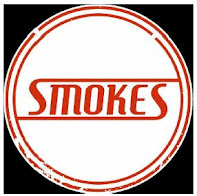Precedential No. 31: "SMOKES & Design" for Cannabis Cigarettes Not Confusable with "SMOK" for Electronic Cigarettes, Says TTAB
You might say that Applicant Fancy Pants relied on the old rope-a-dope strategy in this opposition to its application to register SMOKES & Design for "Cigarettes containing tobacco substitutes not for medical purposes containing only cannabis with a delta-9 THC concentration of not more than 0.3% on a dry weight basis." Opposer Shenzhen claimed likely confusion with its registered mark SMOK and several SMOK-formative marks for electronic cigarettes, parts and components thereof, and related services. Fancy Pants neither submitted testimony and evidence nor filed a brief, but the Board ruled in its favor, finding "SMOK" to be a weak mark, Fancy Pants's mark not confusingly similar to SMOK, and no overlap in trade channels. Shenzhen IVPS Technology Co. Ltd. v. Fancy Pants Products, LLC, 2022 USPQ2d 1035 (TTAB 2022) [precedential] (Opinion by Judge Cheryl S. Goodman).

Family of Marks: In addition to its registration of SMOK and its common law rights, Shenzhen claimed to own a family of "SMOK" marks, including SMOK FASHION, SMOK MODS, SMOK ECIG, SMOK MINI, SMOK PIPE, AND SMOKE TECH. The Board first considered whether Shenzhen established priority of use with regard to its alleged family of marks. Although priority was not an issue as to Shenzen's pleaded registration, priority of the family of marks is a separate issue.
The Board found that "SMOK," the "family feature" of Shenzhen's alleged family of marks, is descriptive of the goods, and therefore Shenzhen must make a "strong showing" of acquired distinctiveness for "SMOK" to quality as a family feature. Considering the evidence as a whole, the Board found that Shenzhen failed to prove that the asserted family feature had acquired distinctiveness prior to Fancy Pants's effective filing date. Therefore, Shenzhen could not prevail on its Section 2(d) claim based on its alleged family of marks.
Individual Common Law Marks: The Board then turned to whether Shenzhen proved priority based on its common law rights in the individual marks. It found that Shenzhen's testimony was "too vague and nonspecific to associate use of any of the SMOK or SMOK-formative marks identified by Opposer’s witness with any particular goods or services or with any date of use."
Registered Mark SMOK: Shenzhen properly submitted only one registration: for the mark SMOK in standard form, for which priority was not an issue. The Board, not surprisingly, found that SMOK, the phonetic equivalent of "smoke," is an inherently weak mark for Shenzhen's products and services. Moreover, the Board found that the design elements in Fancy Pants's mark sufficed to distinguish its mark from the SMOK mark.
As to the goods, the Board focused on Shenzhen's "electronic cigarettes" and found them to be related to Fancy Pants's "cigarettes containing tobacco substitutes," since they both could be used for the same purpose: "vaping or smoking (inhaling) a particular smokable substance."
As to channels of trade, Shenzhen's products are sold online, through smoking shops, vaping shops, and convenience stores, but Shenzhen did not prove that those venues are normal channels of trade for Fancy Pants's products. The fact that both Fancy Pants and Shenzhen promote and offer their products on the Internet is not a sufficient basis for a finding that they are sold through the same trade channels.
Conclusion: Considering the evidence and the argument, the Board found that the dissimilarity of the marks and the weakness of the common element SMOK, together with the lack of proof that the trade channels overlap, required a finding of no likelihood of confusion. And so, it dismissed the opposition.
Read comments and post your comment here.
TTABlogger comment: The mark "SMOK" was registered under Section 2(f). Should a disclaim of "smoke" have been required? Would it be possible?
Text Copyright John L. Welch 2022.

1 Comments:
Why would this be precedential?
Post a Comment
<< Home